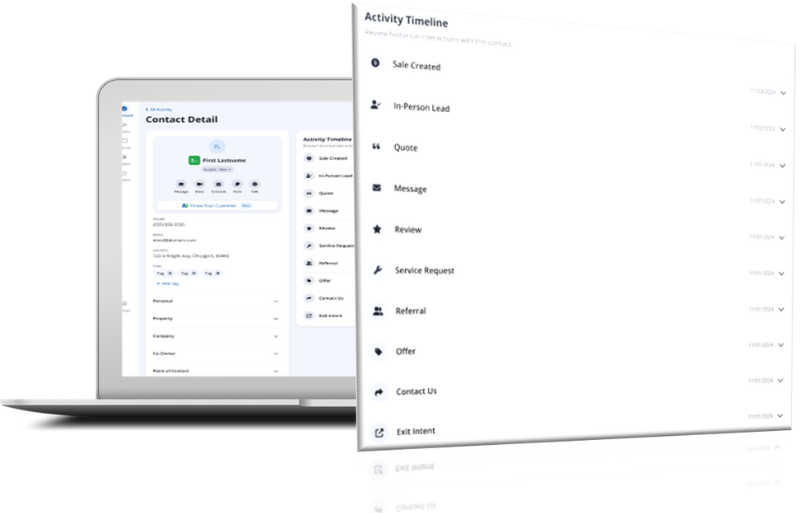Want to Sell More? Then Show, Don’t Tell.

Picture a plainly dressed man sitting outside on a piece of cardboard. He’s holding a cardboard sign. His coat is on. His scarf is wrapped around his neck.
It’s raining.
And yet most people ignore him, even though his sign reads:
I’M BLIND. PLEASE HELP.
A young, professionally dressed woman eventually walks by the man. She stops when she notices his sign, walks over to him, and starts to scribble a new message on the other side of the cardboard. The blind man makes no objections and, when she’s done, the woman walks away...
When she returns several hours later, the plainly dressed man is holding a tin that’s overflowing with change. He’s never seen so much money in his life.
“What did you do to my sign?” He asks the woman, who is standing over him.
“I wrote the same message,” she says, “but in different words.”
The new sign reads: It’s a beautiful day and I can’t see it.
A UK-based content development company called PurpleFeather created this advertisement to show people just how much impact the right words can make.
I transcribed it to demonstrate one writing guideline that you absolutely, positively shouldn’t overlook:
Show, Don’t Tell.
Sound familiar? Freshman-year-third-period-English familiar? Probably.
If you’re a business owner, Freshman year was likely a while ago, so why revisit ancient history? Because this particular principle is as timeless as it is lucrative.
It’s usually not what you say, but how you say it that makes all the difference. That’s why history’s most influential writers rarely told their readers anything. Instead they used dialogue and specific, sensory language to emotionally charge their audience and draw them into their story.
Business owners can also use Show, Don’t Tell to sell more. Here’s why:
It helps your prospects visualize their pain point.
Pain points make the world go round, because virtually every consumer has one.
A pain point is a problem that one would spend money to solve. If your business is service-oriented, you’ve likely heard the same pain points over and over again from prospects. You probably even have them memorized...
Good. That’s your ammunition. Now load it into your website. Preferably with a story -- it’s the best way to engage, entice and sell people.
If you’re a moving company, for example, use each of your website’s service pages (e.g., residential, commercial, long-distance, international) to highlight a particularly unique or challenging job you’re proud of. And make sure your story makes mention of at least one pain point customers seeking out your specific service typically have.
You don’t have to be Earnest Hemingway to get this done. You just have to know your customer.
It keeps prospects on your website longer.
It’s always a good sign when your site visitors stick around, hang out and put
their feet up. It means they:
1. Have a pain point.
2. Like what they see.
3. Feel comfortable.
An effective way to command your visitors’ attention is with copy that shows
rather than tells people what they want to hear. Make them visualize their
problem being solved. Show Don’t Tell
copy will compel
prospects to finish paragraphs, reread sentences and click-through when they
come across a call-to-action.
Why? Because they’re genuinely interested.
It helps your passion come through your marketing vessel.
An author’s passion is conveyed through Show, Don’t Tell content that’s gripping and engaging.
A “marketing vessel” is any tool that helps you promote, advertise and brand your business. One such tool is your company’s website. Another is your professional Facebook page. Another is your Twitter.
Quality marketing vessels are well-maintained and consistently updated with relevant information and, if necessary, great design. This is how businesses earn their credibility and turn organic traffic into revenue.
Show people your passion. Don’t tell them about it.
I'M BLIND. PLEASE HELP. vs. It’s a beautiful day and I can’t see it.
The plainly dressed man sitting outside on a piece of cardboard made one fatal mistake when composing his sign: He underestimated the power of human imagination.
Everyone who walked past the man knew he was blind -- the sign wasn’t telling them anything new. It wasn’t compelling them to venture outside their typical thoughts and truly consider his despair. His sign simply stated the obvious. It never made them think.
The woman’s sign, however, made people contemplate life without sight -- a scary, raw feeling that reminded them what a gift vision truly was. The sign made them appreciate their sight and everything beautiful that comes with it. Her sign stirred their emotions. It made them empathetic.
It showed them what the man was going through. And that made all the difference.
It will make a difference for your business, as well.
Do you have any Show, Don't Tell examples on your website? Tell us about them in the comments!
Questions? Leave a comment and I'll get back to you!
Want to learn more about Spectrum? Click HERE.








